化学学报 ›› 2021, Vol. 79 ›› Issue (8): 967-985.DOI: 10.6023/A21040173 上一篇 下一篇
所属专题: 多孔材料:金属有机框架(MOF)
综述
投稿日期:2021-04-22
发布日期:2021-05-26
通讯作者:
马小杰, 王博
作者简介: |
郭彩霞, 北京理工大学硕士研究生. 2018年本科毕业于山东师范大学, 现于北京理工大学攻读硕士学位. 主要研究领域为MOF复合材料的制备及光催化性能. |
 |
马小杰, 北京理工大学化学与化工学院预聘助理教授, 于兰州大学化学与化工学院取得本科与硕士学位, 中科院化学研究所获得博士学位. 主要从事多孔材料的环境催化研究工作. |
 |
王博, 北京理工大学化学与化工学院教授, 2004年于北京大学化学与分子工程学院获理学学士学位, 2006年于美国密歇根大学获化学材料学硕士学位, 2008年于美国加州大学洛杉矶分校获化学材料学博士学位. 王博教授主要从事新型纳米多孔材料、开放框架聚合物理论与设计及其在关键分离过程、环境防护等领域的应用研究. |
基金资助:
Caixia Guo, Xiaojie Ma( ), Bo Wang(
), Bo Wang( )
)
Received:2021-04-22
Published:2021-05-26
Contact:
Xiaojie Ma, Bo Wang
Supported by:文章分享

金属有机框架材料(metal-organic frameworks, MOFs)是一类新型的有机-无机杂化材料, 具有可功能化的骨架结构、高比表面积、可调控的孔径尺寸等优势. 将MOFs与性质多样的有机/无机功能纳米材料复合, 不仅有可能充分发挥组分各自的优势, 而且有可能产生“1+1>2”的协同效应, 因而引起了人们的广泛关注. 具有光热效应的MOF复合物作为一类重要的MOF复合材料, 在生物诊疗、催化等领域展现出了良好的应用前景. 作者首先综述了近年来MOF复合材料的主要可控制备方法, 随后讨论了光热MOF复合材料的应用研究, 最后对该类材料的未来研究方向和挑战进行了展望.
郭彩霞, 马小杰, 王博. 金属有机框架基复合材料的制备及其光热性能研究[J]. 化学学报, 2021, 79(8): 967-985.
Caixia Guo, Xiaojie Ma, Bo Wang. Metal-organic Frameworks-based Composites and Their Photothermal Applications[J]. Acta Chimica Sinica, 2021, 79(8): 967-985.




























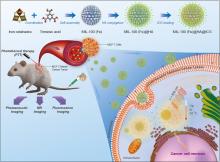



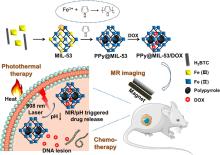



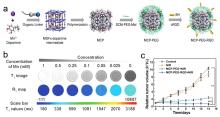


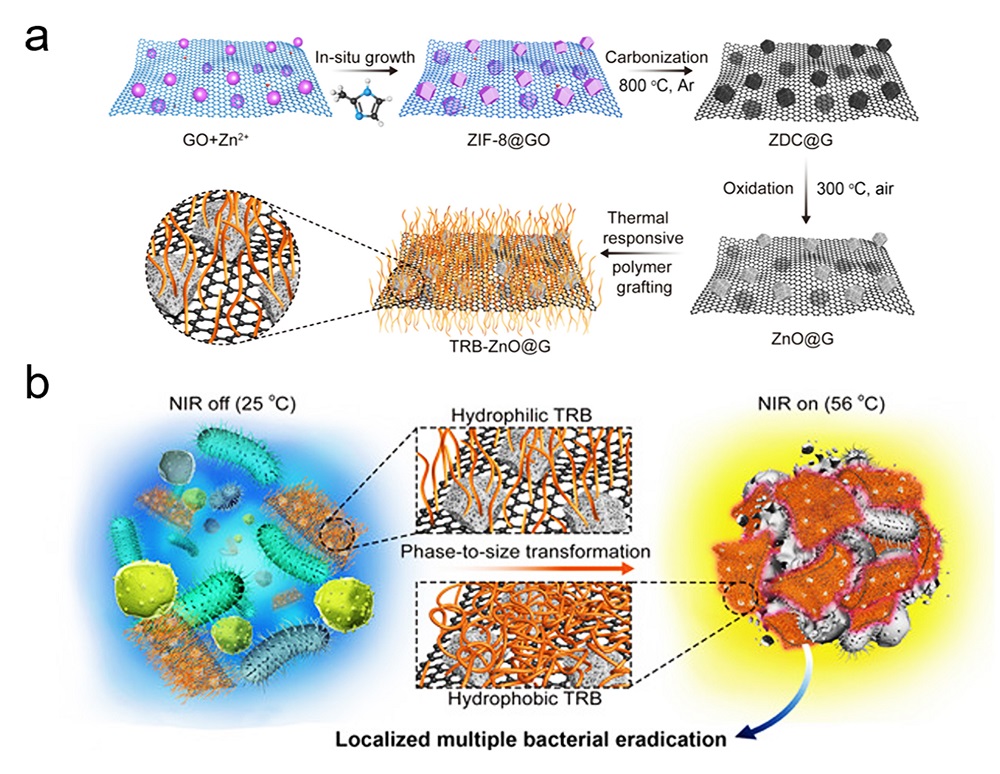
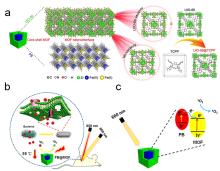

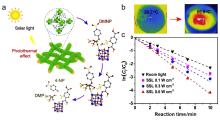







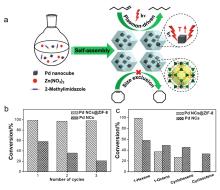



| [1] |
Tranchemontagne, D. J.; Mendoza-Cortes, J. L.; O'Keeffe, M.; Yaghi, O. M. Chem. Soc. Rev. 2009, 38, 1257.
doi: 10.1039/b817735j pmid: 19384437 |
| [2] |
Xu, W.; Tu, B.; Liu, Q.; Shu, Y.; Liang, C. -C.; Diercks, C. S.; Yaghi, O. M.; Zhang, Y. -B.; Deng, H.; Li, Q. Nat. Rev. Mater. 2020, 5, 764.
doi: 10.1038/s41578-020-0225-x |
| [3] |
Ma, R.; Jiang, H.; Wang, C.; Zhao, C.; Deng, H. Chem. Commun. (Camb) 2020, 56, 2715.
doi: 10.1039/C9CC09144K |
| [4] |
Wu, Y.; Huang, Z.; Jiang, H.; Wang, C.; Zhou, Y.; Shen, W.; Xu, H.; Deng, H. ACS Appl. Mater. Interfaces 2019, 11, 44573.
doi: 10.1021/acsami.9b13864 |
| [5] |
Jiang, H.; Jin, S.; Wang, C.; Ma, R.; Song, Y.; Gao, M.; Liu, X.; Shen, A.; Cheng, G. J.; Deng, H. J. Am. Chem. Soc. 2019, 141, 5481.
doi: 10.1021/jacs.9b00355 |
| [6] |
Jiang, H.; Tong, L.; Liu, H.; Xu, J.; Jin, S.; Wang, C.; Hu, X.; Ye, L.; Deng, H.; Cheng, G. J. Matter 2020, 2, 1535.
doi: 10.1016/j.matt.2020.03.003 |
| [7] |
Farha, O. K.; Yazaydin, A. O.; Eryazici, I.; Malliakas, C. D.; Hauser, B. G.; Kanatzidis, M. G.; Nguyen, S. T.; Snurr, R. Q.; Hupp, J. T. Nat. Chem. 2010, 2, 944.
doi: 10.1038/nchem.834 pmid: 20966950 |
| [8] |
Inukai, M.; Tamura, M.; Horike, S.; Higuchi, M.; Kitagawa, S.; Nakamura, K. Angew. Chem. Int. Ed. 2018, 57, 8687.
doi: 10.1002/anie.v57.28 |
| [9] |
Rosi, N. L.; Eckert, J.; Eddaoudi, M.; Vodak, D. T.; Kim, J.; O'Keeffe, M.; Yaghi, O. M. Science 2003, 300, 1127.
doi: 10.1126/science.1083440 |
| [10] |
Guo, Z.; Zhang, Y.; Feng, X. Acta Chim. Sinica 2020, 78, 397. (in Chinese)
doi: 10.6023/A20030081 |
|
( 郭振彬, 张媛媛, 冯霄, 化学学报, 2020, 78, 397.)
doi: 10.6023/A20030081 |
|
| [11] |
Zhang, J.; Li, P.; Zhang, X.; Ma, X.; Wang, B. Acta Chim. Sinica 2020, 78, 597. (in Chinese)
doi: 10.6023/A20050153 |
|
( 张晋维, 李平, 张馨凝, 马小杰, 王博, 化学学报, 2020, 78, 597.)
doi: 10.6023/A20050153 |
|
| [12] |
Zhao, M.; Yuan, K.; Wang, Y.; Li, G.; Guo, J.; Gu, L.; Hu, W.; Zhao, H.; Tang, Z. Nature 2016, 539, 76.
doi: 10.1038/nature19763 |
| [13] |
Huang, N.; Drake, H.; Li, J.; Pang, J.; Wang, Y.; Yuan, S.; Wang, Q.; Cai, P.; Qin, J.; Zhou, H. C. Angew. Chem. Int. Ed. 2018, 57, 8916.
doi: 10.1002/anie.v57.29 |
| [14] |
Xin, Z.; Wang, Y. -R.; Chen, Y.; Li, W. -L.; Dong, L. -Z.; Lan, Y. -Q. Nano Energy 2020, 67, 104233.
doi: 10.1016/j.nanoen.2019.104233 |
| [15] |
Gao, J.; Huang, Q.; Wu, Y.; Lan, Y. -Q.; Chen, B. Adv. Energy Sustainability Res. 2021, 2, 2100033.
doi: 10.1002/aesr.v2.8 |
| [16] |
Li, X.; Wang, J.; Xue, F.; Wu, Y.; Xu, H.; Yi, T.; Li, Q. Angew. Chem. Int. Ed. 2021, 60, 2534.
doi: 10.1002/anie.v60.5 |
| [17] |
Tao, W.; Zhu, X.; Yu, X.; Zeng, X.; Xiao, Q.; Zhang, X.; Ji, X.; Wang, X.; Shi, J.; Zhang, H.; Mei, L. Adv. Mater. 2017, 29, 1603276.
doi: 10.1002/adma.201603276 |
| [18] |
Yang, T.; Cui, Y.; Chen, H.; Li, W. Acta Chim. Sinica 2017, 75, 339. (in Chinese)
doi: 10.6023/A16110592 |
|
( 杨涛, 崔亚男, 陈怀银, 李伟华, 化学学报, 2017, 75, 339.)
doi: 10.6023/A16110592 |
|
| [19] |
Wang, B.; Wang, P.; Xie, L. H.; Lin, R. B.; Lv, J.; Li, J. R.; Chen, B. Nat. Commun. 2019, 10, 3861.
doi: 10.1038/s41467-019-11912-4 pmid: 31455843 |
| [20] |
Luo, Y. H.; Xie, A. D.; Hu, M. G.; Wu, J.; Zhang, D. E.; Lan, Y. Q. Inorg. Chem. 2021, 60, 167.
doi: 10.1021/acs.inorgchem.0c02760 |
| [21] |
Horcajada, P.; Gref, R.; Baati, T.; Allan, P. K.; Maurin, G.; Couvreur, P.; Ferey, G.; Morris, R. E.; Serre, C. Chem. Rev. 2012, 112, 1232.
doi: 10.1021/cr200256v pmid: 22168547 |
| [22] |
Horcajada, P.; Chalati, T.; Serre, C.; Gillet, B.; Sebrie, C.; Baati, T.; Eubank, J. F.; Heurtaux, D.; Clayette, P.; Kreuz, C.; Chang, J. S.; Hwang, Y. K.; Marsaud, V.; Bories, P. N.; Cynober, L.; Gil, S.; Ferey, G.; Couvreur, P.; Gref, R. Nat. Mater. 2010, 9, 172.
doi: 10.1038/nmat2608 pmid: 20010827 |
| [23] |
Zhang, Y.; Wang, F. M.; Ju, E. G.; Liu, Z.; Chen, Z. W.; Ren, J. S.; Qu, X. G. Adv. Funct. Mater. 2016, 26, 6454.
doi: 10.1002/adfm.v26.35 |
| [24] |
Yao, A.; Jiao, X.; Chen, D.; Li, C. ACS Appl. Mater. Interfaces 2019, 11, 7927.
doi: 10.1021/acsami.8b19445 |
| [25] |
Song, L.; Zhao, T.; Yang, D.; Wang, X.; Hao, X.; Liu, Y.; Zhang, S.; Yu, Z. -Z. J. Hazard. Mater. 2020, 393, 122332.
doi: 10.1016/j.jhazmat.2020.122332 |
| [26] |
Yao, A.; Jiao, X.; Chen, D.; Li, C. ACS Appl. Mater. Interfaces 2020, 12, 18437.
doi: 10.1021/acsami.9b22242 |
| [27] |
Chen, Y. -J.; Chen, Y.; Miao, C.; Wang, Y. -R.; Gao, G. -K.; Yang, R. -X.; Zhu, H. -J.; Wang, J. -H.; Li, S. -L.; Lan, Y. -Q. J. Mater. Chem. A 2020, 8, 14644.
doi: 10.1039/D0TA04891G |
| [28] |
Wang, P. L.; Xie, L. H.; Joseph, E. A.; Li, J. R.; Su, X. O.; Zhou, H. C. Chem. Rev. 2019, 119, 10638.
doi: 10.1021/acs.chemrev.9b00257 |
| [29] |
Zeng, J.; Wang, X.; Zhang, X.; Zhuo, R. Acta Chim. Sinica 2019, 77, 1156. (in Chinese)
doi: 10.6023/A19070259 |
|
曾锦跃, 王小双, 张先正, 卓仁禧, 化学学报, 2019, 77, 1156.).
doi: 10.6023/A19070259 |
|
| [30] |
Qi, Y.; Ren, S.; Che, Y.; Ye, J.; Ning, G. Acta Chimica Sinica 2020, 78, 613. (in Chinese)
doi: 10.6023/A20040126 |
|
齐野, 任先颂, 车颖, 叶俊伟, 宁桂玲, 化学学报, 2020, 78, 613.).
doi: 10.6023/A20040126 |
|
| [31] |
Meilikhov, M.; Yusenko, K.; Esken, D.; Turner, S.; Van Tendeloo, G.; Fischer, R. A. Eur. J. Org. Chem. 2010, 3701.
|
| [32] |
Yang, D.; Yang, G.; Gai, S.; He, F.; An, G.; Dai, Y.; Lv, R.; Yang, P. Nanoscale 2015, 7, 19568.
doi: 10.1039/c5nr06192j pmid: 26540558 |
| [33] |
Tian, Q.; Tang, M.; Sun, Y.; Zou, R.; Chen, Z.; Zhu, M.; Yang, S.; Wang, J.; Wang, J.; Hu, J. Adv. Mater. 2011, 23, 3542.
doi: 10.1002/adma.201101295 |
| [34] |
Yang, S. J.; Choi, J. Y.; Chae, H. K.; Cho, J. H.; Nahm, K. S.; Park, C. R. Chem. Mater. 2009, 21, 1893.
doi: 10.1021/cm803502y |
| [35] |
Petit, C.; Bandosz, T. J. Adv. Funct. Mater. 2011, 21, 2108.
doi: 10.1002/adfm.v21.11 |
| [36] |
Prasanth, K. P.; Rallapalli, P.; Raj, M. C.; Bajaj, H. C.; Jasra, R. V. Int. J. Hydrog. Energy 2011, 36, 7594.
doi: 10.1016/j.ijhydene.2011.03.109 |
| [37] |
Distefano, G.; Suzuki, H.; Tsujimoto, M.; Isoda, S.; Bracco, S.; Comotti, A.; Sozzani, P.; Uemura, T.; Kitagawa, S. Nat. Chem. 2013, 5, 335.
doi: 10.1038/nchem.1576 pmid: 23511423 |
| [38] |
Zhu, Y. -D.; Chen, S. -P.; Zhao, H.; Yang, Y.; Chen, X. -Q.; Sun, J.; Fan, H. -S.; Zhang, X. -D. ACS Appl. Mater. Interfaces 2016, 8, 34209.
doi: 10.1021/acsami.6b11378 |
| [39] |
Lu, G.; Li, S.; Guo, Z.; Farha, O. K.; Hauser, B. G.; Qi, X.; Wang, Y.; Wang, X.; Han, S.; Liu, X.; DuChene, J. S.; Zhang, H.; Zhang, Q.; Chen, X.; Ma, J.; Loo, S. C.; Wei, W. D.; Yang, Y.; Hupp, J. T.; Huo, F. Nat. Chem. 2012, 4, 310.
doi: 10.1038/nchem.1272 |
| [40] |
Zhu, Q. L.; Xu, Q. Chem. Soc. Rev. 2014, 43, 5468.
doi: 10.1039/C3CS60472A |
| [41] |
Sabo, M.; Henschel, A.; Fröde, H.; Klemm, E.; Kaskel, S. J. Mater. Chem. 2007, 17, 3827.
doi: 10.1039/b706432b |
| [42] |
Khajavi, H.; Stil, H. A.; Kuipers, H. P.C.E.; Gascon, J.; Kapteijn, F. ACS Catal. 2013, 3, 2617.
doi: 10.1021/cs400681s |
| [43] |
Guo, Z.; Xiao, C.; Maligal-Ganesh, R. V.; Zhou, L.; Goh, T. W.; Li, X.; Tesfagaber, D.; Thiel, A.; Huang, W. ACS Catal. 2014, 4, 1340.
doi: 10.1021/cs400982n |
| [44] |
Volosskiy, B.; Niwa, K.; Chen, Y.; Zhao, Z.; Weiss, N. O.; Zhong, X.; Ding, M.; Lee, C.; Huang, Y.; Duan, X. ACS Nano 2015, 9, 3044.
doi: 10.1021/nn5072446 pmid: 25703179 |
| [45] |
Jiang, H. L.; Akita, T.; Ishida, T.; Haruta, M.; Xu, Q. J. Am. Chem. Soc. 2011, 133, 1304.
doi: 10.1021/ja1099006 |
| [46] |
Cao, N.; Yang, L.; Dai, H.; Liu, T.; Su, J.; Wu, X.; Luo, W.; Cheng, G. Inorg. Chem. 2014, 53, 10122.
doi: 10.1021/ic5010352 |
| [47] |
Shang, N. -Z.; Feng, C.; Gao, S. -T.; Wang, C. Int. J. Hydrog. Energy 2016, 41, 944.
doi: 10.1016/j.ijhydene.2015.10.062 |
| [48] |
Hwang, Y. K.; Hong, D. Y.; Chang, J. S.; Jhung, S. H.; Seo, Y. K.; Kim, J.; Vimont, A.; Daturi, M.; Serre, C.; Ferey, G. Angew. Chem. Int. Ed. 2008, 47, 4144.
doi: 10.1002/(ISSN)1521-3773 |
| [49] |
Jiang, Z.; Xu, X.; Ma, Y.; Cho, H. S.; Ding, D.; Wang, C.; Wu, J.; Oleynikov, P.; Jia, M.; Cheng, J.; Zhou, Y.; Terasaki, O.; Peng, T.; Zan, L.; Deng, H. Nature 2020, 586, 549.
doi: 10.1038/s41586-020-2738-2 |
| [50] |
Lin, X. Y.; Li, Y. H.; Qi, M. Y.; Tang, Z. R.; Jiang, H. L.; Xu, Y. J. Nanoscale Horiz. 2020, 5, 714.
doi: 10.1039/C9NH00769E |
| [51] |
Yadav, M.; Xu, Q. Chem. Commun. (Camb) 2013, 49, 3327.
doi: 10.1039/c3cc00293d |
| [52] |
Aijaz, A.; Karkamkar, A.; Choi, Y. J.; Tsumori, N.; Ronnebro, E.; Autrey, T.; Shioyama, H.; Xu, Q. J. Am. Chem. Soc. 2012, 134, 13926.
doi: 10.1021/ja3043905 |
| [53] |
Li, Y. X.; Ji, Y. N.; Jin, M. M.; Qi, S. C.; Li, S. S.; Xue, D. M.; Yue, M. B.; Liu, X. Q.; Sun, L. B. ACS Appl. Mater. Interfaces 2018, 10, 40044.
doi: 10.1021/acsami.8b15913 |
| [54] |
Zhu, Q. L.; Li, J.; Xu, Q. J. Am. Chem. Soc. 2013, 135, 10210.
doi: 10.1021/ja403330m |
| [55] |
Wang, D.; Pan, Y.; Xu, L.; Li, Z. J. Catal. 2018, 361, 248.
doi: 10.1016/j.jcat.2018.02.033 |
| [56] |
Wang, D.; Li, Z. J. Catal. 2016, 342, 151.
doi: 10.1016/j.jcat.2016.07.021 |
| [57] |
Ding, D.; Jiang, Z.; Jin, J.; Li, J.; Ji, D.; Zhang, Y.; Zan, L. J. Catal. 2019, 375, 21.
doi: 10.1016/j.jcat.2019.05.015 |
| [58] |
Meng, X. -B.; Sheng, J. -L.; Tang, H. -L.; Sun, X. -J.; Dong, H.; Zhang, F. -M. Appl. Catal. B 2019, 244, 340.
doi: 10.1016/j.apcatb.2018.11.018 |
| [59] |
Hermes, S.; Schroter, M. K.; Schmid, R.; Khodeir, L.; Muhler, M.; Tissler, A.; Fischer, R. W.; Fischer, R. A. Angew. Chem. Int. Ed. 2005, 44, 6237.
doi: 10.1002/(ISSN)1521-3773 |
| [60] |
Corma, A.; Garcia, H.; Llabres i Xamena, F. X. Chem. Rev. 2010, 110, 4606.
doi: 10.1021/cr9003924 pmid: 20359232 |
| [61] |
Luz, I.; Rösler, C.; Epp, K.; Llabrés i Xamena, F. X.; Fischer, R. A. Eur. J. Org. Chem. 2015, 2015, 3904.
doi: 10.1002/ejic.v2015.23 |
| [62] |
Proch, S.; Herrmannsdorfer, J.; Kempe, R.; Kern, C.; Jess, A.; Seyfarth, L.; Senker, J. Chemistry 2008, 14, 8204.
|
| [63] |
Li, P. Z.; Aranishi, K.; Xu, Q. Chem. Commun. (Camb) 2012, 48, 3173.
doi: 10.1039/c2cc17302f |
| [64] |
Lim, D. W.; Yoon, J. W.; Ryu, K. Y.; Suh, M. P. Angew. Chem. Int. Ed. 2012, 51, 9814.
doi: 10.1002/anie.201206055 |
| [65] |
Hermannsdorfer, J.; Kempe, R. Chemistry 2011, 17, 8071.
|
| [66] |
Müller, M.; Lebedev, O. I.; Fischer, R. A. J. Mater. Chem. 2008, 18, 5274.
doi: 10.1039/b810989c |
| [67] |
George, S. M. Chem. Rev. 2010, 110, 111.
doi: 10.1021/cr900056b |
| [68] |
Mondloch, J. E.; Bury, W.; Fairen-Jimenez, D.; Kwon, S.; DeMarco, E. J.; Weston, M. H.; Sarjeant, A. A.; Nguyen, S. T.; Stair, P. C.; Snurr, R. Q.; Farha, O. K.; Hupp, J. T. J. Am. Chem. Soc. 2013, 135, 10294.
doi: 10.1021/ja4050828 pmid: 23829224 |
| [69] |
Elam, J. W.; Routkevitch, D.; Mardilovich, P. P.; George, S. M. Chem. Mater. 2003, 15, 3507.
|
| [70] |
Morris, W.; Volosskiy, B.; Demir, S.; Gandara, F.; McGrier, P. L.; Furukawa, H.; Cascio, D.; Stoddart, J. F.; Yaghi, O. M. Inorg. Chem. 2012, 51, 6443.
doi: 10.1021/ic300825s |
| [71] |
Klet, R. C.; Wang, T. C.; Fernandez, L. E.; Truhlar, D. G.; Hupp, J. T.; Farha, O. K. Chem. Mater. 2016, 28, 1213.
doi: 10.1021/acs.chemmater.5b04887 |
| [72] |
Peters, A. W.; Li, Z.; Farha, O. K.; Hupp, J. T. ACS Nano 2015, 9, 8484.
doi: 10.1021/acsnano.5b03429 pmid: 26241521 |
| [73] |
Peters, A. W.; Li, Z.; Farha, O. K.; Hupp, J. T. ACS Appl. Mater. Interfaces 2016, 8, 20675.
doi: 10.1021/acsami.6b04729 |
| [74] |
Peng, S.; Li, M.; Yang, X.; Li, P.; Liu, H.; Xiong, W.; Peng, X. Ceram. Int. 2019, 45, 18128.
doi: 10.1016/j.ceramint.2019.05.306 |
| [75] |
Ahn, S.; Thornburg, N. E.; Li, Z.; Wang, T. C.; Gallington, L. C.; Chapman, K. W.; Notestein, J. M.; Hupp, J. T.; Farha, O. K. Inorg. Chem. 2016, 55, 11954.
doi: 10.1021/acs.inorgchem.6b02103 |
| [76] |
Cui, Y.; Rimoldi, M.; Platero-Prats, A. E.; Chapman, K. W.; Hupp, J. T.; Farha, O. K. ChemCatChem 2018, 10, 1772.
doi: 10.1002/cctc.v10.8 |
| [77] |
Goetjen, T. A.; Zhang, X.; Liu, J.; Hupp, J. T.; Farha, O. K. ACS Sustain. Chem. Eng. 2019, 7, 2553.
doi: 10.1021/acssuschemeng.8b05524 |
| [78] |
Ji, P.; Manna, K.; Lin, Z.; Feng, X.; Urban, A.; Song, Y.; Lin, W. J. Am. Chem. Soc. 2017, 139, 7004.
doi: 10.1021/jacs.7b02394 |
| [79] |
Ji, P.; Manna, K.; Lin, Z.; Urban, A.; Greene, F. X.; Lan, G.; Lin, W. J. Am. Chem. Soc. 2016, 138, 12234.
doi: 10.1021/jacs.6b06759 |
| [80] |
Kung, C. W.; Platero-Prats, A. E.; Drout, R. J.; Kang, J.; Wang, T. C.; Audu, C. O.; Hersam, M. C.; Chapman, K. W.; Farha, O. K.; Hupp, J. T. ACS Appl. Mater. Interfaces 2018, 10, 30532.
doi: 10.1021/acsami.8b08270 |
| [81] |
Li, Z.; Peters, A. W.; Bernales, V.; Ortuno, M. A.; Schweitzer, N. M.; DeStefano, M. R.; Gallington, L. C.; Platero-Prats, A. E.; Chapman, K. W.; Cramer, C. J.; Gagliardi, L.; Hupp, J. T.; Farha, O. K. ACS Cent. Sci. 2017, 3, 31.
doi: 10.1021/acscentsci.6b00290 |
| [82] |
Liu, J.; Redfern, L. R.; Liao, Y.; Islamoglu, T.; Atilgan, A.; Farha, O. K.; Hupp, J. T. ACS Appl. Mater. Interfaces 2019, 11, 47822.
doi: 10.1021/acsami.9b12261 |
| [83] |
Noh, H.; Cui, Y.; Peters, A. W.; Pahls, D. R.; Ortuno, M. A.; Vermeulen, N. A.; Cramer, C. J.; Gagliardi, L.; Hupp, J. T.; Farha, O. K. J. Am. Chem. Soc. 2016, 138, 14720.
doi: 10.1021/jacs.6b08898 |
| [84] |
Wang, Y. -H.; Chuang, C. -H.; Chiu, T. -A.; Kung, C. -W.; Yu, W. -Y. J. Phys. Chem. C 2020, 124, 12521.
doi: 10.1021/acs.jpcc.0c02743 |
| [85] |
Wang, Y. -S.; Chen, Y. -C.; Li, J. -H.; Kung, C. -W. Eur. J. Org. Chem. 2019, 2019, 3036.
doi: 10.1002/ejic.201900584 |
| [86] |
Yuan, S.; Chen, Y. P.; Qin, J.; Lu, W.; Wang, X.; Zhang, Q.; Bosch, M.; Liu, T. F.; Lian, X.; Zhou, H. C. Angew. Chem. Int. Ed. 2015, 54, 14696.
doi: 10.1002/anie.v54.49 |
| [87] |
Noh, H.; Kung, C. -W.; Otake, K. -i.; Peters, A. W.; Li, Z.; Liao, Y.; Gong, X.; Farha, O. K.; Hupp, J. T. ACS Catal. 2018, 8, 9848.
doi: 10.1021/acscatal.8b02921 |
| [88] |
Kung, C. -W.; Audu, C. O.; Peters, A. W.; Noh, H.; Farha, O. K.; Hupp, J. T. ACS Energy Lett. 2017, 2, 2394.
doi: 10.1021/acsenergylett.7b00621 |
| [89] |
He, D.; Niu, H.; He, S.; Mao, L.; Cai, Y.; Liang, Y. Water Res. 2019, 162, 151.
doi: 10.1016/j.watres.2019.06.058 |
| [90] |
Li, X.; Zhang, Z.; Xiao, W.; Deng, S.; Chen, C.; Zhang, N. J. Mater. Chem. A 2019, 7, 14504.
doi: 10.1039/C9TA03578H |
| [91] |
Bhattacharyya, S.; Rambabu, D.; Maji, T. K. J. Mater. Chem. A 2019, 7, 21106.
doi: 10.1039/c9ta05977f |
| [92] |
Li, Y.; Jin, J.; Wang, D.; Lv, J.; Hou, K.; Liu, Y.; Chen, C.; Tang, Z. Nano Res. 2018, 11, 3294.
doi: 10.1007/s12274-017-1874-y |
| [93] |
He, J.; Dong, J.; Hu, Y.; Li, G.; Hu, Y. Nanoscale 2019, 11, 6089.
doi: 10.1039/C9NR00041K |
| [94] |
Zhu, W.; Chen, M.; Liu, Y.; Tian, Y.; Song, Z.; Song, G.; Zhang, X. Nanoscale 2019, 11, 20630.
doi: 10.1039/C9NR06349H |
| [95] |
Liu, C.; Luo, L.; Zeng, L.; Xing, J.; Xia, Y.; Sun, S.; Zhang, L.; Yu, Z.; Yao, J.; Yu, Z.; Akakuru, O. U.; Saeed, M.; Wu, A. Small 2018, 14,e1801851.
|
| [96] |
Zhang, H.; Zhang, Q.; Liu, C.; Han, B. Biomater. Sci. 2019, 7, 1696.
doi: 10.1039/C8BM01591K |
| [97] |
Deng, X.; Liang, S.; Cai, X.; Huang, S.; Cheng, Z.; Shi, Y.; Pang, M.; Ma, P. a.; Lin, J. Nano Lett. 2019, 19, 6772.
doi: 10.1021/acs.nanolett.9b01716 |
| [98] |
Zhang, L.; Liu, C.; Gao, Y.; Li, Z.; Xing, J.; Ren, W.; Zhang, L.; Li, A.; Lu, G.; Wu, A.; Zeng, L. Adv. Healthc. Mater. 2018, 7,e1801144.
|
| [99] |
Fang, L.; Wang, W.; Liu, Y.; Xie, Z.; Chen, L. Dalton Trans. 2017, 46, 8933.
doi: 10.1039/c7dt00613f pmid: 28657619 |
| [ |
Yang, Q.; Xu, Q.; Yu, S. -H.; Jiang, H. -L. Angew. Chem. Int. Ed. 2016, 55, 3685.
doi: 10.1002/anie.201510655 |
| [ |
Wang, L.; Li, S. R.; Chen, Y. Z.; Jiang, H. L. Small 2021, e2004481.
|
| [ |
Wu, H.; Gu, D.; Xia, S.; Chen, F.; You, C.; Sun, B. Biomater. Sci. 2021, 9, 1020.
doi: 10.1039/D0BM01734E |
| [ |
Sui, C.; Tan, R.; Chen, Y.; Yin, G.; Wang, Z.; Xu, W.; Li, X. Bioconjug. Chem. 2021, 32, 318.
doi: 10.1021/acs.bioconjchem.0c00694 |
| [ |
Park, H.; Yang, J.; Lee, J.; Haam, S.; Choi, I. H.; Yoo, K. H. ACS Nano 2009, 3, 2919.
doi: 10.1021/nn900215k |
| [ |
Zou, L.; Wang, H.; He, B.; Zeng, L.; Tan, T.; Cao, H.; He, X.; Zhang, Z.; Guo, S.; Li, Y. Theranostics 2016, 6, 762.
doi: 10.7150/thno.14988 |
| [ |
Zhu, H.; Cheng, P.; Chen, P.; Pu, K. Biomater. Sci. 2018, 6, 746.
doi: 10.1039/C7BM01210A |
| [ |
Gai, S.; Yang, G.; Yang, P.; He, F.; Lin, J.; Jin, D.; Xing, B. Nano Today 2018, 19, 146.
doi: 10.1016/j.nantod.2018.02.010 |
| [ |
Gong, H.; Dong, Z.; Liu, Y.; Yin, S.; Cheng, L.; Xi, W.; Xiang, J.; Liu, K.; Li, Y.; Liu, Z. Adv. Funct. Mater. 2014, 24, 6492.
doi: 10.1002/adfm.v24.41 |
| [ |
Arvizo, R. R.; Bhattacharyya, S.; Kudgus, R. A.; Giri, K.; Bhattacharya, R.; Mukherjee, P. Chem. Soc. Rev. 2012, 41, 2943.
doi: 10.1039/c2cs15355f |
| [ |
von Maltzahn,, G.; Park,, J. H.; Agrawal,, A.; Bandaru,, N. K.; Das,, S. K.; Sailor,, M. J.; Bhatia,, S. N. Cancer Res. 2009, 69, 3892.
doi: 10.1158/0008-5472.CAN-08-4242 |
| [ |
Huang, X.; Tang, S.; Mu, X.; Dai, Y.; Chen, G.; Zhou, Z.; Ruan, F.; Yang, Z.; Zheng, N. Nat. Nanotechnol. 2011, 6, 28.
doi: 10.1038/nnano.2010.235 |
| [ |
Guo, T.; Wu, Y.; Lin, Y.; Xu, X.; Lian, H.; Huang, G.; Liu, J. Z.; Wu, X.; Yang, H. H. Small 2018, 14, 1702815.
doi: 10.1002/smll.v14.4 |
| [ |
Lu, J.; Yang, J.; Carvalho, A.; Liu, H.; Lu, Y.; Sow, C. H. Acc. Chem. Res. 2016, 49, 1806.
doi: 10.1021/acs.accounts.6b00266 |
| [ |
Liu, J.; Liu, T.; Du, P.; Zhang, L.; Lei, J. Angew. Chem. Int. Ed. 2019, 58, 7808.
doi: 10.1002/anie.v58.23 |
| [ |
Biswal, B. P.; Shinde, D. B.; Pillai, V. K.; Banerjee, R. Nanoscale 2013, 5, 10556.
doi: 10.1039/c3nr03511e |
| [ |
Tian, Z.; Yao, X.; Ma, K.; Niu, X.; Grothe, J.; Xu, Q.; Liu, L.; Kaskel, S.; Zhu, Y. ACS Omega 2017, 2, 1249.
doi: 10.1021/acsomega.6b00385 |
| [ |
Cheng, L.; Yang, K.; Li, Y.; Chen, J.; Wang, C.; Shao, M.; Lee, S. T.; Liu, Z. Angew. Chem. Int. Ed. 2011, 50, 7385.
doi: 10.1002/anie.v50.32 |
| [ |
Li, W.; Wang, J.; Ren, J.; Qu, X. J. Am. Chem. Soc. 2014, 136, 2248.
doi: 10.1021/ja412364m |
| [ |
Cheng, L.; Yang, K.; Li, Y.; Zeng, X.; Shao, M.; Lee, S. T.; Liu, Z. Biomaterials 2012, 33, 2215.
doi: 10.1016/j.biomaterials.2011.11.069 |
| [ |
Cheng, Z.; Dai, Y.; Kang, X.; Li, C.; Huang, S.; Lian, H.; Hou, Z.; Ma, P.; Lin, J. Biomaterials 2014, 35, 6359.
doi: 10.1016/j.biomaterials.2014.04.029 |
| [ |
Yang, W.; Li, X.; Chi, D.; Zhang, H.; Liu, X. Nanotechnol. 2014, 25, 482001.
doi: 10.1088/0957-4484/25/48/482001 |
| [ |
Zhou, J.; Liu, Q.; Feng, W.; Sun, Y.; Li, F. Chem. Rev. 2015, 115, 395.
doi: 10.1021/cr400478f |
| [ |
Chen, G.; Qiu, H.; Prasad, P. N.; Chen, X. Chem. Rev. 2014, 114, 5161.
doi: 10.1021/cr400425h |
| [ |
Liu, Q.; Yang, T.; Feng, W.; Li, F. J. Am. Chem. Soc. 2012, 134, 5390.
doi: 10.1021/ja3003638 |
| [ |
Gao, S.; Zheng, P.; Li, Z.; Feng, X.; Yan, W.; Chen, S.; Guo, W.; Liu, D.; Yang, X.; Wang, S.; Liang, X. J.; Zhang, J. Biomaterials 2018, 178, 83.
doi: 10.1016/j.biomaterials.2018.06.007 |
| [ |
Deng, K.; Hou, Z.; Li, X.; Li, C.; Zhang, Y.; Deng, X.; Cheng, Z.; Lin, J. Sci. Rep. 2015, 5, 7851.
doi: 10.1038/srep07851 |
| [ |
Yang, D.; Xu, J.; Yang, G.; Zhou, Y.; Ji, H.; Bi, H.; Gai, S.; He, F.; Yang, P. Chem. Eng. J. 2018, 344, 363.
doi: 10.1016/j.cej.2018.03.101 |
| [ |
Cheng, L.; Gong, H.; Zhu, W.; Liu, J.; Wang, X.; Liu, G.; Liu, Z. Biomaterials 2014, 35, 9844.
doi: 10.1016/j.biomaterials.2014.09.004 |
| [ |
Yang, Y.; Jing, L.; Li, X.; Lin, L.; Yue, X.; Dai, Z. Theranostics 2017, 7, 466.
doi: 10.7150/thno.17411 |
| [ |
Wang, D.; Zhou, J.; Chen, R.; Shi, R.; Zhao, G.; Xia, G.; Li, R.; Liu, Z.; Tian, J.; Wang, H.; Guo, Z.; Wang, H.; Chen, Q. Biomaterials 2016, 100, 27.
doi: 10.1016/j.biomaterials.2016.05.027 |
| [ |
Valko, M.; Morris, H.; Cronin, M. T.D. Chem. Mater. 2005, 12, 1161.
|
| [ |
Wang, D.; Zhou, J.; Shi, R.; Wu, H.; Chen, R.; Duan, B.; Xia, G.; Xu, P.; Wang, H.; Zhou, S.; Wang, C.; Wang, H.; Guo, Z.; Chen, Q. Theranostics 2017, 7, 4605.
doi: 10.7150/thno.20363 |
| [ |
Dong, W.; Li, Y.; Niu, D.; Ma, Z.; Gu, J.; Chen, Y.; Zhao, W.; Liu, X.; Liu, C.; Shi, J. Adv. Mater. 2011, 23, 5392.
doi: 10.1002/adma.201103521 |
| [ |
Yang, K.; Hu, L.; Ma, X.; Ye, S.; Cheng, L.; Shi, X.; Li, C.; Li, Y.; Liu, Z. Adv. Mater. 2012, 24, 1868.
doi: 10.1002/adma.v24.14 |
| [ |
Tang, S.; Huang, X.; Zheng, N. Chem. Commun. (Camb) 2011, 47, 3948.
doi: 10.1039/c1cc10451a |
| [ |
Liu, Y.; Bai, J.; Jia, X.; Jiang, X.; Guo, Z. ACS Appl. Mater. Interfaces 2015, 7, 112.
doi: 10.1021/am507658v |
| [ |
Liu, H.; Chen, D.; Li, L.; Liu, T.; Tan, L.; Wu, X.; Tang, F. Angew. Chem. Int. Ed. 2011, 50, 891.
|
| [ |
Jin, C. S.; Lovell, J. F.; Chen, J.; Zheng, G. ACS Nano 2013, 7, 2541.
doi: 10.1021/nn3058642 |
| [ |
Yang, K.; Xu, H.; Cheng, L.; Sun, C.; Wang, J.; Liu, Z. Adv. Mater. 2012, 24, 5586.
doi: 10.1002/adma.201202625 |
| [ |
Guo, R.; Peng, H.; Tian, Y.; Shen, S.; Yang, W. Small 2016, 12, 4541.
doi: 10.1002/smll.v12.33 |
| [ |
Wang, Y.; Yang, T.; Ke, H.; Zhu, A.; Wang, Y.; Wang, J.; Shen, J.; Liu, G.; Chen, C.; Zhao, Y.; Chen, H. Adv. Mater. 2015, 27, 3874.
doi: 10.1002/adma.201500229 |
| [ |
Li, B.; Wang, X.; Chen, L.; Zhou, Y.; Dang, W.; Chang, J.; Wu, C. Theranostics 2018, 8, 4086.
doi: 10.7150/thno.25433 |
| [ |
Zheng, X.; Wang, L.; Liu, M.; Lei, P.; Liu, F.; Xie, Z. Chem. Mater. 2018, 30, 6867.
doi: 10.1021/acs.chemmater.8b03043 |
| [ |
Yang, Y.; Liu, J.; Liang, C.; Feng, L.; Fu, T.; Dong, Z.; Chao, Y.; Li, Y.; Lu, G.; Chen, M.; Liu, Z. ACS Nano 2016, 10, 2774.
doi: 10.1021/acsnano.5b07882 pmid: 26799993 |
| [ |
Chen, L.; Zhang, J.; Zhou, X.; Yang, S.; Zhang, Q.; Wang, W.; You, Z.; Peng, C.; He, C. Acta Biomater. 2019, 86, 406.
doi: 10.1016/j.actbio.2019.01.005 |
| [ |
Cai, X.; Liu, B.; Pang, M.; Lin, J. Dalton Trans. 2018, 47, 16329.
doi: 10.1039/C8DT02941E |
| [ |
Cai, W.; Gao, H.; Chu, C.; Wang, X.; Wang, J.; Zhang, P.; Lin, G.; Li, W.; Liu, G.; Chen, X. ACS Appl. Mater. Interfaces 2017, 9, 2040.
doi: 10.1021/acsami.6b11579 |
| [ |
Wang, C.; Xu, H.; Liang, C.; Liu, Y.; Li, Z.; Yang, G.; Cheng, L.; Li, Y.; Liu, Z. ACS Nano 2013, 7, 6782.
doi: 10.1021/nn4017179 |
| [ |
Cai, X.; Deng, X.; Xie, Z.; Shi, Y.; Pang, M.; Lin, J. Chem. Eng. J. 2019, 358, 369.
doi: 10.1016/j.cej.2018.10.044 |
| [ |
Chen, X.; Zhang, M.; Li, S.; Li, L.; Zhang, L.; Wang, T.; Yu, M.; Mou, Z.; Wang, C. J. Mater. Chem. B 2017, 5, 1772.
doi: 10.1039/C6TB03218D |
| [ |
Huang, J.; Li, N.; Zhang, C.; Meng, Z. ACS Appl. Mater. Interfaces 2018, 10, 38729.
doi: 10.1021/acsami.8b12394 |
| [ |
Repenko, T.; Fokong, S.; De Laporte, L.; Go, D.; Kiessling, F.; Lammers, T.; Kuehne, A. J. Chem. Commun. (Camb) 2015, 51, 6084.
doi: 10.1039/C5CC00039D |
| [ |
Wu, Q.; Niu, M.; Chen, X.; Tan, L.; Fu, C.; Ren, X.; Ren, J.; Li, L.; Xu, K.; Zhong, H.; Meng, X. Biomaterials 2018, 162, 132.
doi: 10.1016/j.biomaterials.2018.02.022 |
| [ |
Zhang, Y.; Wang, L.; Liu, L.; Lin, L.; Liu, F.; Xie, Z.; Tian, H.; Chen, X. ACS Appl. Mater. Interfaces 2018, 10, 41035.
doi: 10.1021/acsami.8b13492 |
| [ |
Wang, D.; Wu, H.; Zhou, J.; Xu, P.; Wang, C.; Shi, R.; Wang, H.; Wang, H.; Guo, Z.; Chen, Q. Adv. Sci. 2018, 5, 1800287.
doi: 10.1002/advs.v5.6 |
| [ |
Li, S.; Zhang, L.; Liang, X.; Wang, T.; Chen, X.; Liu, C.; Li, L.; Wang, C. Chem. Eng. J. 2019, 378, 122175.
doi: 10.1016/j.cej.2019.122175 |
| [ |
Wang, W.; Wang, L.; Li, Y.; Liu, S.; Xie, Z.; Jing, X. Adv. Mater. 2016, 28, 9320.
doi: 10.1002/adma.201602997 |
| [ |
Varadi, L.; Luo, J. L.; Hibbs, D. E.; Perry, J. D.; Anderson, R. J.; Orenga, S.; Groundwater, P. W. Chem. Soc. Rev. 2017, 46, 4818.
doi: 10.1039/C6CS00693K |
| [ |
Whiteley, M.; Diggle, S. P.; Greenberg, E. P. Nature 2017, 551, 313.
doi: 10.1038/nature24624 |
| [ |
D'Elia, R. V.; Woods, S.; Butcher, W.; McGahon, J.; Khadke, S.; Perrie, Y.; Williamson, E. D. Roberts, C. W.; J. Control. Release 2019, 298, 202.
doi: 10.1016/j.jconrel.2019.02.002 |
| [ |
Raffatellu, M. Nat. Med. 2018, 24, 1097.
doi: 10.1038/s41591-018-0145-0 pmid: 30082869 |
| [ |
Schlaich, C.; Li, M.; Cheng, C.; Donskyi, I. S.; Yu, L.; Song, G.; Osorio, E.; Wei, Q.; Haag, R. Adv. Mater. Interfaces 2018, 5, 1701254.
doi: 10.1002/admi.201701254 |
| [ |
Wang, W.; Hao, C.; Sun, M.; Xu, L.; Wu, X.; Xu, C.; Kuang, H. Adv. Funct. Mater. 2018, 28, 1805112.
doi: 10.1002/adfm.v28.44 |
| [ |
Joseph, R.; Naugolny, A.; Feldman, M.; Herzog, I. M.; Fridman, M.; Cohen, Y. J. Am. Chem. Soc. 2016, 138, 754.
doi: 10.1021/jacs.5b11834 |
| [ |
Zhang, Y.; Sun, P.; Zhang, L.; Wang, Z.; Wang, F.; Dong, K.; Liu, Z.; Ren, J.; Qu, X. Adv. Funct. Mater. 2019, 29,1808594.
|
| [ |
Song, Z.; Wu, Y.; Cao, Q.; Wang, H.; Wang, X.; Han, H. Adv. Funct. Mater. 2018, 28,1800011.
|
| [ |
Nie, X.; Wu, S.; Huang, F.; Wang, Q.; Wei, Q. ACS Appl. Mater. Interfaces 2021, 13, 2245.
doi: 10.1021/acsami.0c18474 |
| [ |
Luo, Y.; Liu, X.; Tan, L.; Li, Z.; Yeung, K. W.K.; Zheng, Y.; Cui, Z.; Liang, Y.; Zhu, S.; Li, C.; Wang, X.; Wu, S. Chem. Eng. J. 2021, 405, 126730.
doi: 10.1016/j.cej.2020.126730 |
| [ |
Liu, J.; Wu, D.; Zhu, N.; Wu, Y.; Li, G. Trend Food Sci. Technol. 2021, 109, 413.
doi: 10.1016/j.tifs.2021.01.012 |
| [ |
Min, H.; Wang, J.; Qi, Y.; Zhang, Y.; Han, X.; Xu, Y.; Xu, J.; Li, Y.; Chen, L.; Cheng, K.; Liu, G.; Yang, N.; Li, Y.; Nie, G. Adv. Mater. 2019, 31,e1808200.
|
| [ |
Yang, Y.; Ma, L.; Cheng, C.; Deng, Y.; Huang, J.; Fan, X.; Nie, C.; Zhao, W.; Zhao, C. Adv. Funct. Mater. 2018, 28,1705708.
|
| [ |
Yu, X.; He, D.; Zhang, X.; Zhang, H.; Song, J.; Shi, D.; Fan, Y.; Luo, G.; Deng, J. ACS Appl. Mater. Interfaces 2019, 11, 1766.
doi: 10.1021/acsami.8b12873 |
| [ |
Phan, T. N.; Buckner, T.; Sheng, J.; Baldeck, J. D.; Marquis, R. E. Oral Microbiol. Immun. 2004, 19, 31.
pmid: 14678472 |
| [ |
Liu, Z.; Tan, L.; Liu, X.; Liang, Y.; Zheng, Y.; Yeung, K. W.K.; Cui, Z.; Zhu, S.; Li, Z.; Wu, S. Colloids Surf. B 2020, 188, 110781.
doi: 10.1016/j.colsurfb.2020.110781 |
| [ |
Pan, X.; Bai, L.; Wang, H.; Wu, Q.; Wang, H.; Liu, S.; Xu, B.; Shi, X.; Liu, H. Adv. Mater. 2018, 30,e1800180.
|
| [ |
Li, S.; Cheng, C.; Sagaltchik, A.; Pachfule, P.; Zhao, C.; Thomas, A. Adv. Funct. Mater. 2019, 29, 1807419.
doi: 10.1002/adfm.v29.3 |
| [ |
Yang, Y.; Deng, Y.; Huang, J.; Fan, X.; Cheng, C.; Nie, C.; Ma, L.; Zhao, W.; Zhao, C. Adv. Funct. Mater. 2019, 29, 1900143.
doi: 10.1002/adfm.v29.33 |
| [ |
Yang, Y.; Wu, X.; He, C.; Huang, J.; Yin, S.; Zhou, M.; Ma, L.; Zhao, W.; Qiu, L.; Cheng, C.; Zhao, C. ACS Appl. Mater. Interfaces 2020, 12, 13698.
doi: 10.1021/acsami.0c01666 |
| [ |
Fan, X.; Yang, F.; Huang, J.; Yang, Y.; Nie, C.; Zhao, W.; Ma, L.; Cheng, C.; Zhao, C.; Haag, R. Nano Lett. 2019, 19, 5885.
doi: 10.1021/acs.nanolett.9b01400 |
| [ |
Luo, Y.; Li, J.; Liu, X.; Tan, L.; Cui, Z.; Feng, X.; Yang, X.; Liang, Y.; Li, Z.; Zhu, S.; Zheng, Y.; Yeung, K. W.K.; Yang, C.; Wang, X.; Wu, S. ACS Cent. Sci. 2019, 5, 1591.
doi: 10.1021/acscentsci.9b00639 |
| [ |
Han, D.; Han, Y.; Li, J.; Liu, X.; Yeung, K. W.K.; Zheng, Y.; Cui, Z.; Yang, X.; Liang, Y.; Li, Z.; Zhu, S.; Yuan, X.; Feng, X.; Yang, C.; Wu, S. Appl. Catal. B 2020, 261, 118248.
doi: 10.1016/j.apcatb.2019.118248 |
| [ |
Yu, P.; Han, Y.; Han, D.; Liu, X.; Liang, Y.; Li, Z.; Zhu, S.; Wu, S. J. Hazard. Mater. 2020, 390, 122126.
doi: 10.1016/j.jhazmat.2020.122126 |
| [ |
Enserink, M. Science 2013, 341, 1050.
doi: 10.1126/science.341.6150.1050 pmid: 24009365 |
| [ |
Orcutt, M.; Rayes, D.; Tarakji, A.; Katoub, M.; Spiegel, P.; Rubenstein, L.; Jabbour, S.; Alkhalil, M.; Alabbas, M.; Abbara, A. Lancet 2019, 394, 100.
doi: 10.1016/S0140-6736(19)31564-8 |
| [ |
Bobbitt, N. S.; Mendonca, M. L.; Howarth, A. J.; Islamoglu, T.; Hupp, J. T.; Farha, O. K.; Snurr, R. Q. Chem. Soc. Rev. 2017, 46, 3357.
doi: 10.1039/c7cs00108h pmid: 28345694 |
| [ |
DeCoste, J. B.; Peterson, G. W. Chem. Rev. 2014, 114, 5695.
doi: 10.1021/cr4006473 pmid: 24750116 |
| [ |
Liu, Y.; Howarth, A. J.; Vermeulen, N. A.; Moon, S. -Y.; Hupp, J. T.; Farha, O. K. Coord. Chem. Rev. 2017, 346, 101.
doi: 10.1016/j.ccr.2016.11.008 |
| [ |
Yang, M. Q.; Gao, M.; Hong, M.; Ho, G. W. Adv. Mater. 2018, 30, e1802894.
|
| [ |
Meng, X.; Wang, T.; Liu, L.; Ouyang, S.; Li, P.; Hu, H.; Kako, T.; Iwai, H.; Tanaka, A.; Ye, J. Angew. Chem. Int. Ed. 2014, 53, 11478.
doi: 10.1002/anie.201404953 |
| [ |
Wang, F.; Huang, Y.; Chai, Z.; Zeng, M.; Li, Q.; Wang, Y.; Xu, D. Chem. Sci. 2016, 7, 6887.
doi: 10.1039/C6SC03239G |
| [ |
Li, L.; Yang, W.; Yang, Q.; Guan, Q.; Lu, J.; Yu, S. -H.; Jiang, H. -L. ACS Catal. 2020, 10, 7753.
doi: 10.1021/acscatal.0c00177 |
| [ |
Yang, Q.; Yang, C. C.; Lin, C. H.; Jiang, H. L. Angew. Chem. Int. Ed. 2019, 58, 3511.
doi: 10.1002/anie.201813494 |
| [ |
Wang, S. S.; Jiao, L.; Qian, Y.; Hu, W. C.; Xu, G. Y.; Wang, C.; Jiang, H. L. Angew. Chem. Int. Ed. 2019, 58, 10713.
doi: 10.1002/anie.v58.31 |
| [ |
Xiao, J. -D.; Jiang, H. -L. Acc. Chem. Res. 2018, 52, 356.
doi: 10.1021/acs.accounts.8b00521 |
| [ |
Chen, Y. -Z.; Wang, Z. U.; Wang, H.; Lu, J.; Yu, S. -H.; Jiang, H. -L. J. Am. Chem. Soc. 2017, 139, 2035.
doi: 10.1021/jacs.6b12074 pmid: 28103670 |
| [1] | 王华高, 程群峰. 冰模板技术仿生构筑层状高分子纳米复合材料的研究进展★[J]. 化学学报, 2023, 81(9): 1231-1239. |
| [2] | 孙博, 琚雯雯, 王涛, 孙晓军, 赵婷, 卢晓梅, 陆峰, 范曲立. 高分散共轭聚合物-金属有机框架纳米立方体的制备及抗肿瘤应用[J]. 化学学报, 2023, 81(7): 757-762. |
| [3] | 徐袁利, 潘辉, 杨义, 左智伟. 连续流条件下蒽-铈协同催化的苄位碳氢键选择性氧化反应★[J]. 化学学报, 2023, 81(5): 435-440. |
| [4] | 徐赫, 韩鹏博, 秦安军, 唐本忠. 光热材料的发展现状及应用前景★[J]. 化学学报, 2023, 81(10): 1420-1437. |
| [5] | 李小娟, 叶梓瑜, 谢书涵, 王永净, 王永好, 吕源财, 林春香. 氮氯共掺杂多孔碳活化过一硫酸盐降解苯酚的性能及机理研究[J]. 化学学报, 2022, 80(9): 1238-1249. |
| [6] | 牛犇, 翟振宇, 郝肖柯, 任婷莉, 李从举. 基于ZIF-8/PAN复合薄膜的柔性丙酮气体传感器[J]. 化学学报, 2022, 80(7): 946-955. |
| [7] | 宋亚瑞, 王凯升, 安广宇, 赵法军, 门彬, 杜昭兮, 王东升. 粉末活性炭基复合材料制备及净化含油污水的性能和机制[J]. 化学学报, 2022, 80(12): 1592-1599. |
| [8] | 朱鹏飞, 娄晨思, 史雨翰, 王传义. Ag/AgCl/ZIF-8复合材料的制备及其对NO光催化氧化性能的研究[J]. 化学学报, 2022, 80(10): 1385-1393. |
| [9] | 刘汉鼎, 贾国栋, 朱胜, 盛建, 张则尧, 李彦. 功能碳基复合材料在锂硫电池正极中的应用[J]. 化学学报, 2022, 80(1): 89-97. |
| [10] | 杜英喆, 张恒, 苑世领. Al2O3/PDMS复合材料热传导的分子动力学模拟[J]. 化学学报, 2021, 79(6): 787-793. |
| [11] | 王涛, 赵璐, 王科伟, 白云峰, 冯锋. 共价有机框架的合成及其在肿瘤治疗中的应用研究进展[J]. 化学学报, 2021, 79(5): 600-613. |
| [12] | 李旭飞, 闫保有, 黄维秋, 浮历沛, 孙宪航, 吕爱华. 金属有机骨架及其复合材料基于筛分复合效应的C2分离的研究进展[J]. 化学学报, 2021, 79(4): 459-471. |
| [13] | 李佳欣, 李蓓, 王纪康, 何蕾, 赵宇飞. 水滑石(LDHs)及其衍生物在生物医药领域的研究进展[J]. 化学学报, 2021, 79(3): 238-256. |
| [14] | 张留伟, 陈麒先, 王静云. 活性氧响应型抗肿瘤前药研究进展[J]. 化学学报, 2020, 78(7): 642-656. |
| [15] | 陈杨, 杜亚丹, 王勇, 刘普旭, 李立博, 李晋平. UTSA-280的氨改性以及C2H4/C2H6分离性能研究[J]. 化学学报, 2020, 78(6): 534-539. |
| 阅读次数 | ||||||
|
全文 |
|
|||||
|
摘要 |
|
|||||